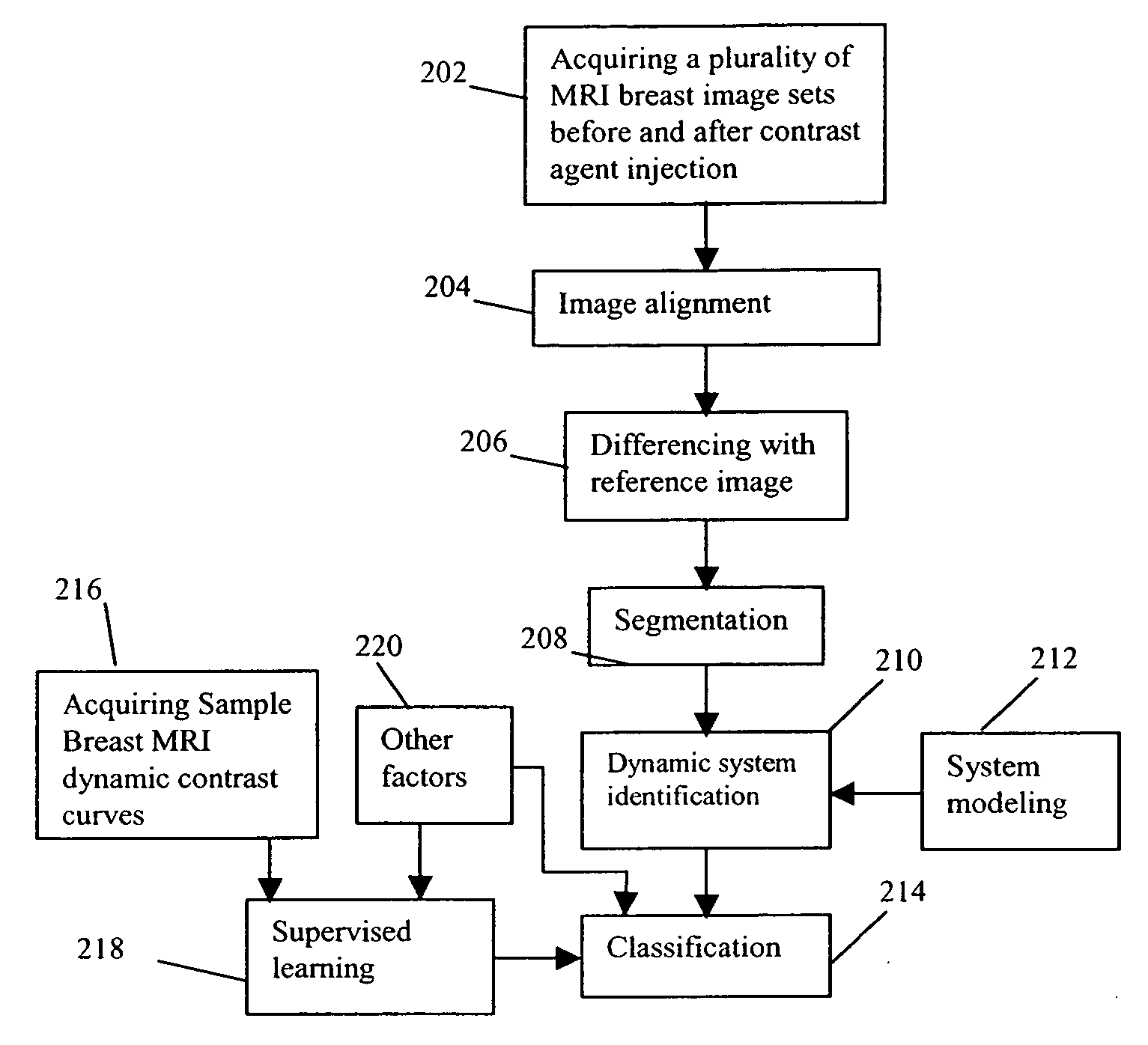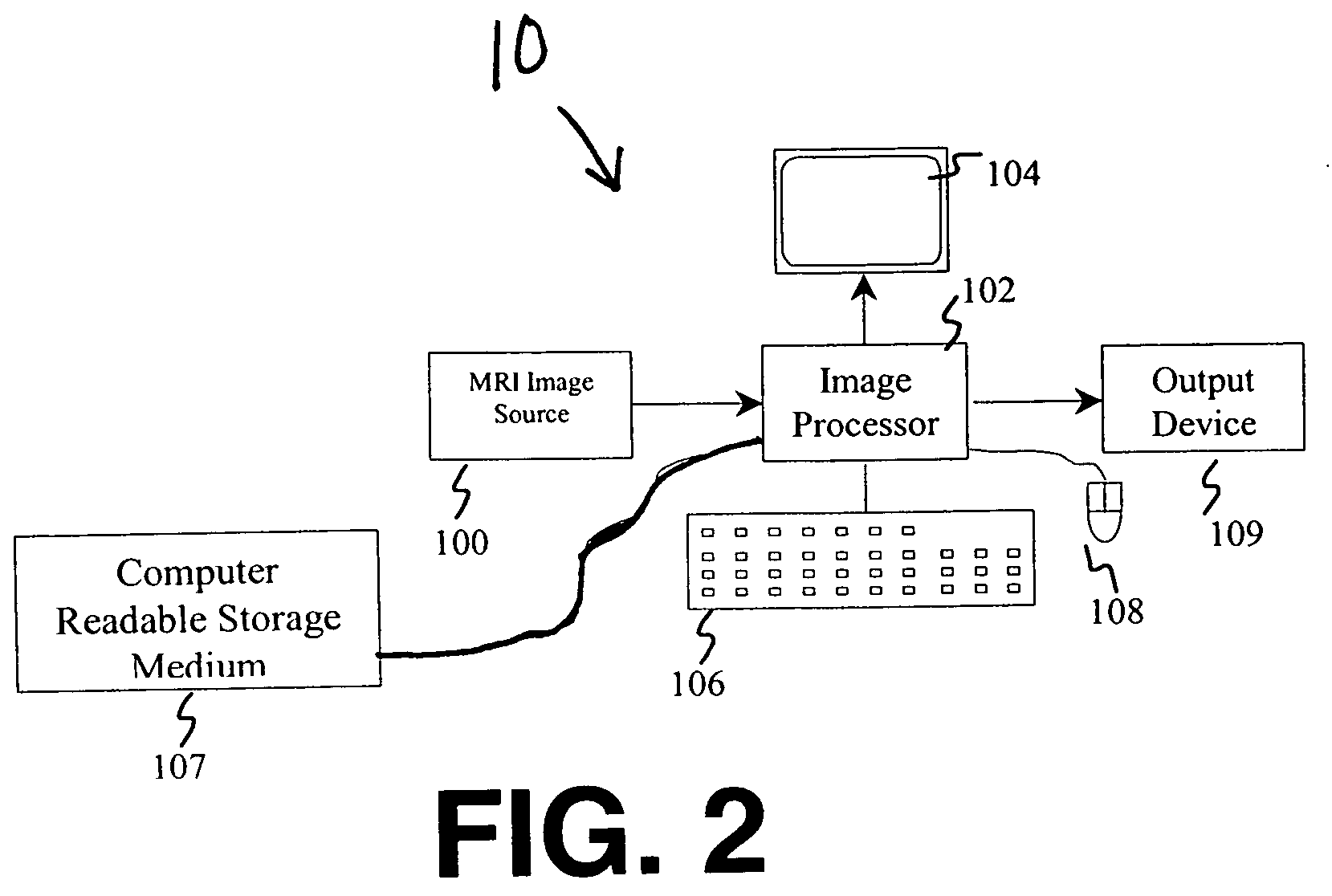Automatic abnormal tissue detection in MRI images
a tissue detection and automatic technology, applied in image analysis, image enhancement, instruments, etc., can solve the problems of inconsistent and properly interpreting a series, difficult coordination of multiple images with respect to each other, and poor delineation of anatomy
- Summary
- Abstract
- Description
- Claims
- Application Information
AI Technical Summary
Problems solved by technology
Method used
Image
Examples
Embodiment Construction
[0032] The following is a detailed description of the preferred embodiments of the invention, reference being made to the drawings in which the same reference numerals identify the same elements of structure in each of the several figures.
[0033]FIG. 2 shows an image processing system 10 useful in practicing the method in accordance with the present invention. System 10 includes a digital MRI image source100, for example, an MRI scanner, a digital image storage device (such as a compact disk drive), or the like. The digital image from digital MRI image source 100 is provided to an image processor 102, for example, a programmable personal computer, or digital image processing work station such as a Sun Sparc workstation. Image processor 102 can be connected to a display 104 (such as a CRT display or other monitor), an operator interface such as a keyboard 106, and a mouse 108 or other known input device. Image processor 102 is also connected to computer readable storage medium 107. I...
PUM
 Login to View More
Login to View More Abstract
Description
Claims
Application Information
 Login to View More
Login to View More - R&D
- Intellectual Property
- Life Sciences
- Materials
- Tech Scout
- Unparalleled Data Quality
- Higher Quality Content
- 60% Fewer Hallucinations
Browse by: Latest US Patents, China's latest patents, Technical Efficacy Thesaurus, Application Domain, Technology Topic, Popular Technical Reports.
© 2025 PatSnap. All rights reserved.Legal|Privacy policy|Modern Slavery Act Transparency Statement|Sitemap|About US| Contact US: help@patsnap.com



